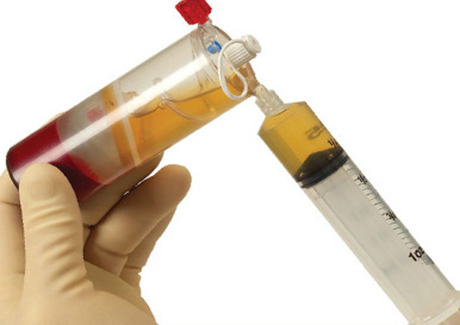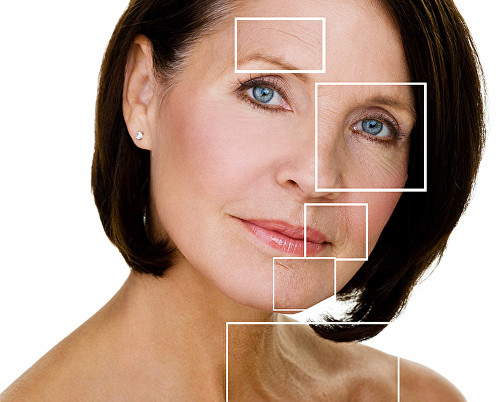About APRP (Autologous Platelet Rich Plasma Treatment) in the Cosmetic Medical Arena
APRP is a fantastic method of anti-ageing treatment now being offered at our clinics, allowing rejuvenation and repair of the skin, using the patient’s own (autologous) cells, with long lasting effects.
APRP therapy uses the body’s own blood plasma and concentrated platelets to regenerate damaged skin and subcutaneous tissues just under the skin. It is particularly useful in treating common problem skin conditions such as hollows under the eye, but it can be used anywhere on the face, neck, décolletage and hands where there are signs of ageing or wrinkles or hollows. The plasma may also be mixed with other filler products for an enhanced effect.
Anti-ageing medicine: What happens when we get older?
From around age 30+: Damage in Dermis and Epidermis layers of the skin leads to:
Decrease in:
Content of Elastin & Collagen
Skin fatty layers
Number of cells
Extracellular matrix
All these lead to:
Changes in skin texture, firmness, radiance, volume, flexibility, elasticity and then on to wrinkle formation.


How does APRP work?
Platelets are packed with numerous different growth factors in the blood (at least 7 well known factors) and they have an incredible capacity to stimulate local stem cells to make NEW tissue – in the skin this can be fibroblasts (cells that make collagen), the collagen itself, keratinocytes (the predominant cells in the outer epidermal layer that give skin its lustre and glow) and other factors that lead to cell REPAIR and restoration.
A sample of your own blood is drawn and immediately spun in a centrifuge. This separates the red blood cells from the plasma, platelets and other components. The platelet rich portion of the plasma can then be removed and used for any aesthetic purpose.
This platelet-rich plasma contains a number of different growth factors needed to generate new skin cells, as well as having a variety of proteins, enzymes, albumen, fibrinogen and many of the essential amino acids that optimise skin health.
The rejuvenated skin appears younger, more elastic, thicker, tighter, more radiant and patients report an ‘Anti-ageing’ effect.
After topical anaesthetic cream has been applied to the problem area, your own plasma is injected and acts as a catalyst, releasing its protein-rich healing factors, the white cells and platelets. The cascade effect of the natural healing processes causes the gradual regeneration of the skin and the subcutaneous structures.
Which areas is it specifically recommended for?
- Fine lines around the eyes
- Crow’s feet
- Dark circles around eyes
- Skin tightening after weight loss
- Peri-oral lines (around the mouth)
- Neck and décolletage
- Back of hands
- Naso-labial (nose to mouth) lines
- Marionette lines
- ‘Jowls’
- Cheeks
- Acne scarring
- Stretch marks
Advantages of APRP over conventional dermal fillers
- PRP Promotes local tissue growth and repair.
- Patient’s safety – patient’s own blood: Reduced risk of infection
- No disease transmission
- Non toxic
- No rejection
- No ‘lumps’ or ‘sludging’.
- Convenience – PRP prepared at doctor’s office
- Faster healing – PLT accelerate tissue synthesis.
- Cost effectiveness – No need for external substances.
- Simple and easy to use.
Patient selection
Age 30 – 40 years: In this age category the main aim is rejuvenation and prevention of collagen degradation and re- stimulation of new collagen and elastin production, thus attempting to slow down the ageing process. One treatment every 2 years is sufficient.
40 – 50 years: In this age category the aim is rejuvenation and to attempt a reversal of the ageing process which is more difficult. More re-stimulation of collagen and elastin production is necessary. The initial treatment should be followed by a second treatment 3-6 months later and a third treatment 9 months after the second treatment. Follow-up ‘maintenance’ treatments may be necessary every 12-18 months.
Age 50+ years: In this age category the aim is rejuvenation and to attempt a more intense reversal of the ageing process. The initial treatment should be followed by a second treatment 3-6 months later and a third treatment 6 months after the second treatment. Follow-up ‘maintenance’ treatments may be necessary every 12 months.
How long does the treatment take?
APRP Therapy is a very straightforward treatment. The entire treatment from the blood draw to completion is usually less than an hour. It is a very safe treatment because the plasma used is from your own body and therefore eliminates any risk of allergic reaction or rejection.
How many treatments are necessary?
Therapy is usually administered via two or three treatment sessions taken a number of months apart, depending upon the areas treated and the desired results. Your personal plasma therapy plan will be assessed as part of your medical consultation.
The frequency of treatment and maintenance will depend on the initial condition of your skin, taking into account your age, the effects of sun damage, alcohol and smoking, and your desired treatment outcomes. This treatment gradually increases the skin’s production of collagen, improving skin thickness and the overall texture, tone and health of the skin. In most cases, improvements start to appear as early as 3-4 weeks after the first treatment.
In many instances, APRP Therapy is combined with dermal filler treatment using products such as Juvéderm.
This combination, in our experience, is likely to yield the most impressive and optimal results.
Please note: A noticeable improvement in skin characteristics is not to be expected within the first 3 months as this is a long-term anti-ageing treatment mechanism. Despite this, many patients do report a tightening of the skin and a ‘glow’ within the first few weeks although this response is variable. It is important to be patient after this treatment and to accept that it may need to be repeated if the results are sub-optimal after a single treatment. Our aesthetics co-ordinators will be happy to advise in these circumstances.
Does it hurt?
No, Autologous Platelet Rich Plasma Treatment does not hurt. There may be some minor discomfort and a small risk of bruising but most patients tolerate this treatment without any distress at all.
Who should not have this treatment?
Pregnancy
Active malignancy (chemotherapy)
Chronic liver disease
Blood or clotting disorders (eg on warfarin) which predispose to the risk of bleeding
Treatment preparation (esp for smokers)
High Dose Oral Vitamin C (1,000mg+) daily for 7 days pre-treatment & post-treatment
Reference:
USING OBJECTIVE CRITERIA TO EVALUATE COSMETIC EFFECTS OF PLATELET RICH PLASMA
Gilbert Amgar, Christian Bonnet, Alain Butnaru and Fabienne Herault-Bardin
December 2011: Prime Journal
NOTE : For facial aesthetics appointments, please bring photographic ID for proof of address

